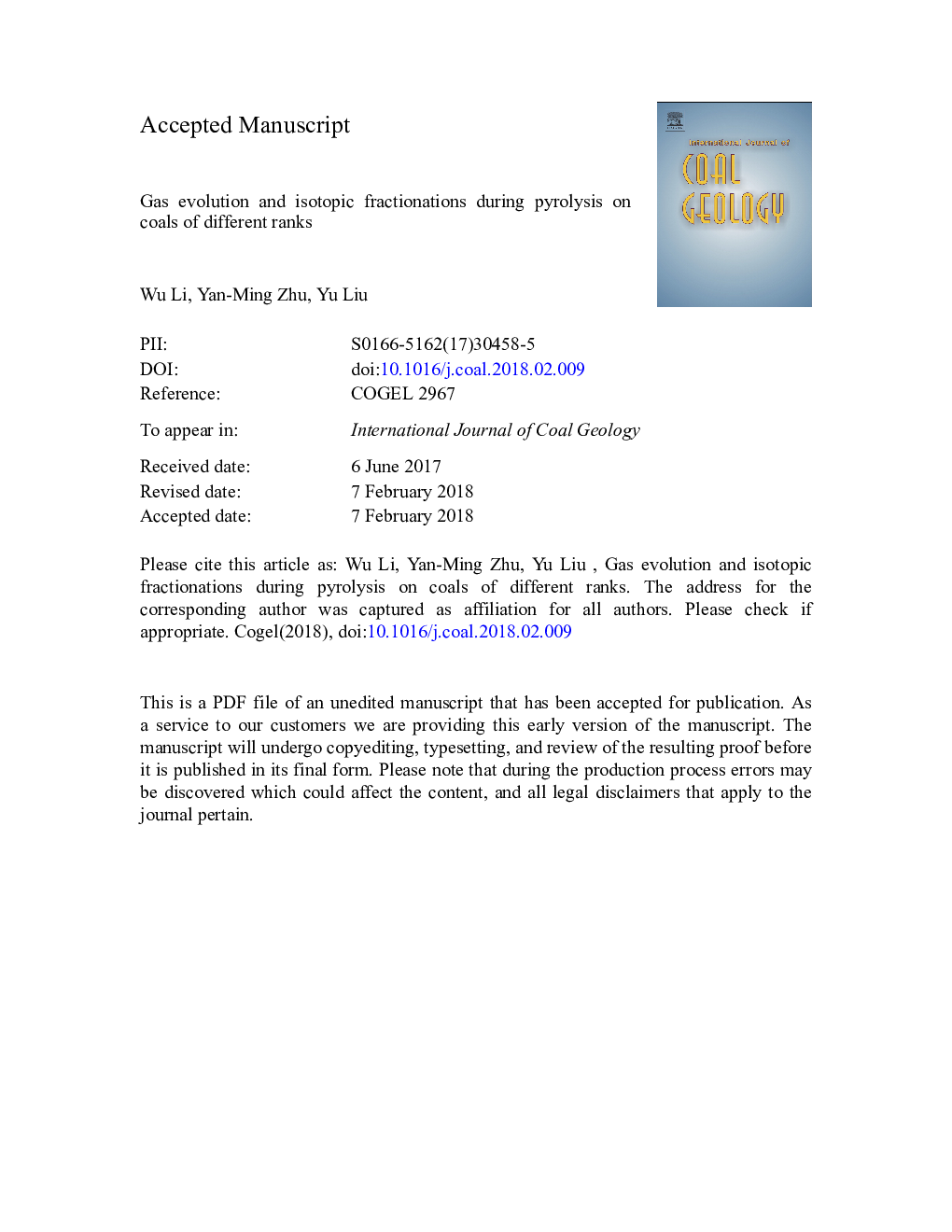| کد مقاله | کد نشریه | سال انتشار | مقاله انگلیسی | نسخه تمام متن |
|---|---|---|---|---|
| 8123528 | 1522515 | 2018 | 48 صفحه PDF | دانلود رایگان |
عنوان انگلیسی مقاله ISI
Gas evolution and isotopic fractionations during pyrolysis on coals of different ranks
ترجمه فارسی عنوان
تکامل گاز و فرایند ایزوتوپها در طی زلزله بر روی ذغال سنگ از صفات مختلف
دانلود مقاله + سفارش ترجمه
دانلود مقاله ISI انگلیسی
رایگان برای ایرانیان
کلمات کلیدی
تولید هیدروکربن، پیرولیز، ایزوتوپ کربن پایدار، زغال سنگ،
موضوعات مرتبط
مهندسی و علوم پایه
علوم زمین و سیارات
زمین شناسی اقتصادی
چکیده انگلیسی
The study was performed on 4 different coals of varied rank. Pyrolysis was conducted on coals of different ranks in gold capsules, with the yield and stable carbon isotopic values of selected gas components and liquid hydrocarbons separately measured to investigate the hydrocarbon generation chemistry, isotopic compositions, and kinetic parameters in coal. With increasing heating temperature, the methane concentrations and total gaseous hydrocarbons increase consistently with temperature. The liquid hydrocarbon concentrations first increase to maximum values and then decrease with temperature. Coals of higher ranks are more likely to primarily produce methane, while coal with low maturity is more likely to produce wet gases. The compositional differences of the four coals become similar at the late stage of the pyrolysis experiment, with a methane content >95%. All of the experiments show a similar isotope trend δ13C1â¯<â¯Î´13C2â¯<â¯Î´13C3 at the same temperature. The δ13C values of ethane and propane became less negative with increasing temperature for all four experiments. The gap between δ13C1 and δ13C2 is greater than that between δ13C2 and δ13C3. There is a linear relationship between ln(C1/C2) versus ln(C2/C3). When ln(C2/C3) increases sharply as ln(C1/C2) increases, the decomposition rates exceed the generation rates for C4â¯+5, C3, and C2 as secondary oil cracking occurs. At high temperatures, both parameters are larger. The activation energy distribution of 48-72â¯kcal/mol for Yilan coal is slightly higher than 55-66â¯kcal/mol for Xinjing coal, but significantly higher than the distribution of 46-61â¯kcal/mol for Qinan coal and 51-67â¯kcal/mol for Shitai coal.
ناشر
Database: Elsevier - ScienceDirect (ساینس دایرکت)
Journal: International Journal of Coal Geology - Volume 188, 1 March 2018, Pages 136-144
Journal: International Journal of Coal Geology - Volume 188, 1 March 2018, Pages 136-144
نویسندگان
Wu Li, Yan-Ming Zhu, Yu Liu,
